In the cosy confines of her studio in Blackwell, Missouri, Larysa Bernhardt breathes life into the delicate art of embroidery, creating vibrant, textured moth sculptures that captivate and inspire. Born with an inherent knack for sewing, Bernhardt’s passion for textiles runs deep in her veins, passed down through generations of her family.
Larysa humorously claims she was “born with a needle in one hand and scissors in the other,” but her journey into the world of embroidery began earnestly through a familial lineage rich in textile artistry. The maternal side of her family always had two daughters: one with a flair for sewing and the other pursuing a more conventional career. Bernhardt embraced her artistic calling, diving into the intricate world of fabrics and needlework.
Larysa Bernhardt’s work is characterized by her unique blend of appliqué, beading, and embroidery. Her pieces are often inspired by a mélange of influences, from Chinese culture to vintage textiles. Bernhardt’s creative process is both structured and organic. While she begins with a sketch, her pieces often evolve naturally as she works, reflecting a fluidity that ensures each creation is imbued with a sense of spontaneity and authenticity.
Bernhardt’s art, deeply rooted in personal history and cultural heritage, invites viewers into a world where the delicate beauty of moths tells stories of change, transformation, and the timeless allure of textiles. For textile artists and hobbyists alike, her work offers a rich source of inspiration and a testament to the magic of embroidery.
Larysa Bernhardt
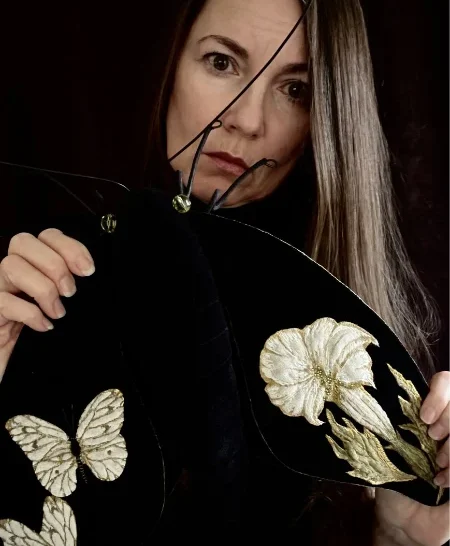
“I’ve always loved velvets but they’re an absolute nightmare to work with. It’s a love/hate relationship, but I think we understand each other at this point.”
How and when did you first start to stitch?
I was born with needle in one hand and scissors in the other. But seriously, it just runs through the maternal side of my family. There were always two daughters on the maternal side as far as I can trace our ancestry: One has a knack for sewing and the other gets a job that actually pays. I can sew.

Tell us about a recent piece you’ve finished
The last finished piece I made was for “Year of the Dragon” show at Modern Eden gallery in San Francisco. I was captivated by the theme! I chose the raspberry red background – shades of red symbolise happiness in Chinese culture. Did you know that red is traditionally used for a wedding dresses in China? So fascinating!
As I was sketching different ideas and never completely satisfied with any, I thought ‘why not Dragon Moth?’ I used appliqué, beading, and embroidering techniques to give the moth a set of dragon eyes making sure they don’t come across as menacing. I hope my dragon moth looks like a wise creature, with a little glint of humour and curiosity. I hope it will bring happiness to the collector who bought it.


How did your style develop? Do you plan out your pieces beforehand or let them develop organically as you sew?
I’ve always been fascinated by textiles and kept a vast collection of antique and vintage pieces. Tapestries, embroidery pieces, antique lace. Anything made of natural fibres attracts cloth moths.
Anything with wings would produce a panic attack with thorough inspecting, cleaning, and air drying of my treasures afterwards. As I was messing with some irreparable pieces of old needlepoint very obviously damaged by moths I thought – what if? And the first moth was born. From my husband it brought eyeroll so impressive I thought his eyeballs are going to be forever lost inside his head. But here we are.
When I am not using antique textiles already in existence I start with idea and a sketch. But I rarely follow it exactly. I spend a long time with every piece and ideas keep flowing. Sometimes pieces ends up looking close to the original sketch. Sometimes it is different completely. And sometimes it goes into a glass top display case next to my worktable where I can see it every day until I finally figure out what it wants to be. There’s no forcing it, it must come out naturally and make sense, even if to me only.


Would you agree that 3D sculptures are more of a challenge? How do you put your 3D moths together?
Yes, working in 3D is a more complicated process, of course. All my pieces are wired, including the wings. There’s a wire skeleton inside. With my background in fashion design I approach construction with same techniques I would use when constructing a tailored suit.
Think of it as making a full-length body suit…for a moth. I don’t use glue, there’s no tricks or shortcuts, my work is honest. And, of course, my choice of textiles brings additional challenges. I’ve always loved velvets but they’re an absolute nightmare to work with. It’s a love/hate relationship, but I think we understand each other at this point.


What is it that keeps you on track and motivated – any advice for our students would be very welcome!
Knowing my own limitations keeps me on track. I wish I was a person who thrives at 6 o’clock in the morning. I’m not, and I learned to live with it. But closer to noon I’m thriving like your lawn’s most obnoxious dandelion. Eleven in the morning to 6 o’clock in the evening are my best working hours. So, I suppose this is my advice. Find what time you’re at your best-highest-most productive. Use it for what’s most important in your life.
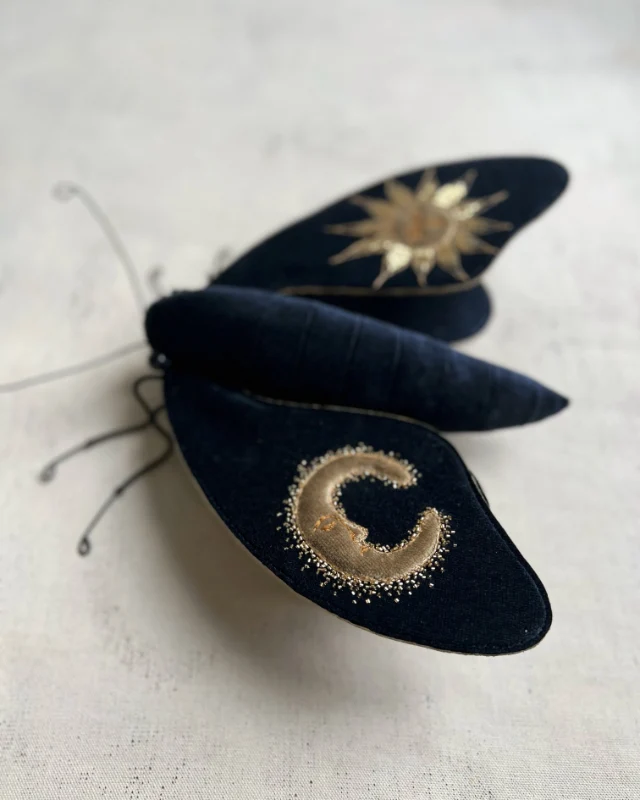

You’re originally from Ukraine? How much has this influenced your work?
I think my love of textiles and embellishments stems from growing up in Ukraine. By now everyone probably has an idea of what Ukrainian culture is about, and if you look up traditional interiors of Ukrainian khata (house) you will see textiles EVERYWHERE. Wall hangings, table cloths, bed covers, floor coverings, sometimes layered in multiple rugs and runners, leaving an inch of space unadorned feel like a sin. My ancestors definitely knew how to cozy up for winter, with incomprehensible amounts of pillows and hand embroidered sheets and blankets and throws.
In warmer weather it all gets swapped out with lighter cottons and linens and delicate crocheted pieces. Most spaces in my house have the same, layered look. You can hurdle me into any corner of the world and I will never stop being Ukrainian. It’s in my blood.
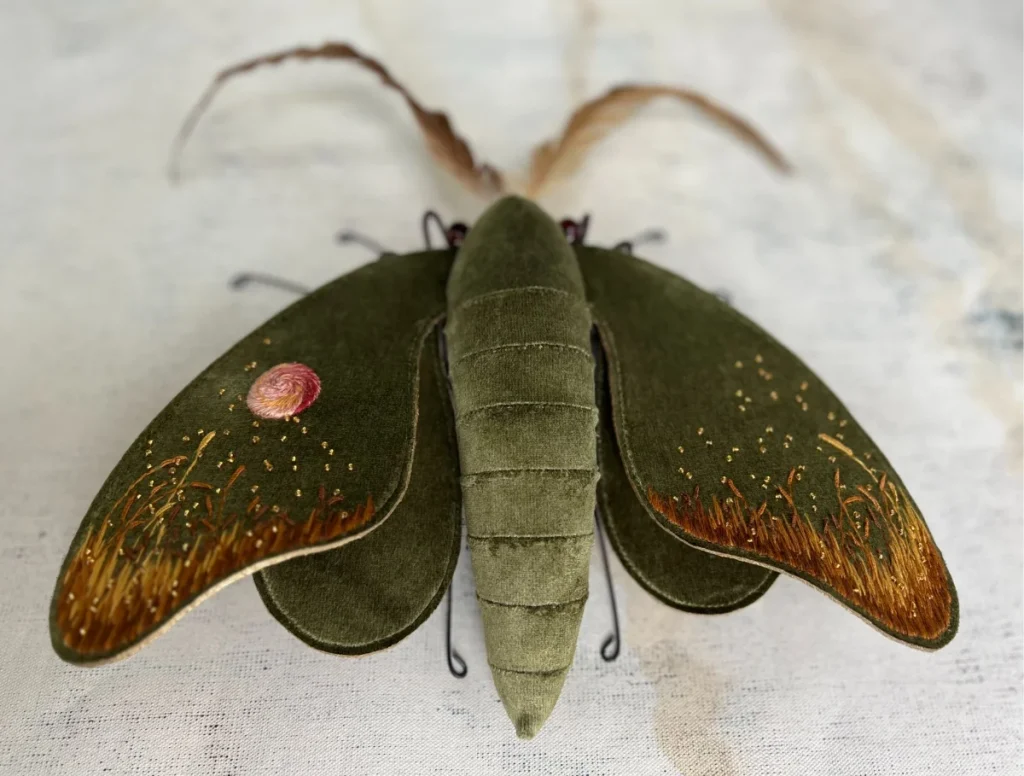
What's next?
I would love to have a book published. It has always been my dream! There’s so much to know about producing a book though! I have so much to share. So, for right now I have my journal and my monthly newsletter where I share my thoughts and stories from my studio, you can sign up via website.
Beginning few years ago I decided to take on only one solo show a year, this year it is with beautiful Beinart Gallery in Melbourne. And the one I’m very excited about, Beautiful Bizarre magazine curated show “Paracosmic Escape” in San Francisco’s Modern Eden Gallery in November.
For up-to-date information please visit her website or follow Larysa Bernhardt on Instagram.
Key Takeaways from Larysa Bernhardt
Embrace Your Heritage: Larysa’s Ukrainian background deeply influences her work, demonstrating how cultural heritage can provide a rich source of inspiration for artistic endeavours.
Organic Creativity: While starting with a sketch, Larysa allows her pieces to develop organically. This approach underscores the importance of flexibility and intuition in the creative process.
Mastering Techniques: Larysa’s experience in fashion design aids in the intricate construction of her 3D moth sculptures, emphasizing the value of technical skills and attention to detail.
Use Your Best Time: She highlights the importance of recognizing your most productive hours and dedicating them to your most significant work, a valuable lesson for maintaining motivation and efficiency.
Passion for Textiles: Larysa’s love for antique and vintage textiles not only fuels her creativity but also connects her to history, showing how a deep passion for materials can enhance the storytelling aspect of art.


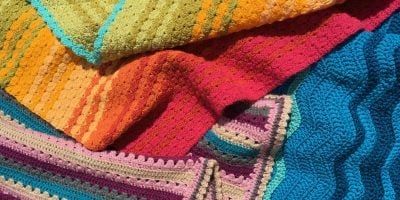
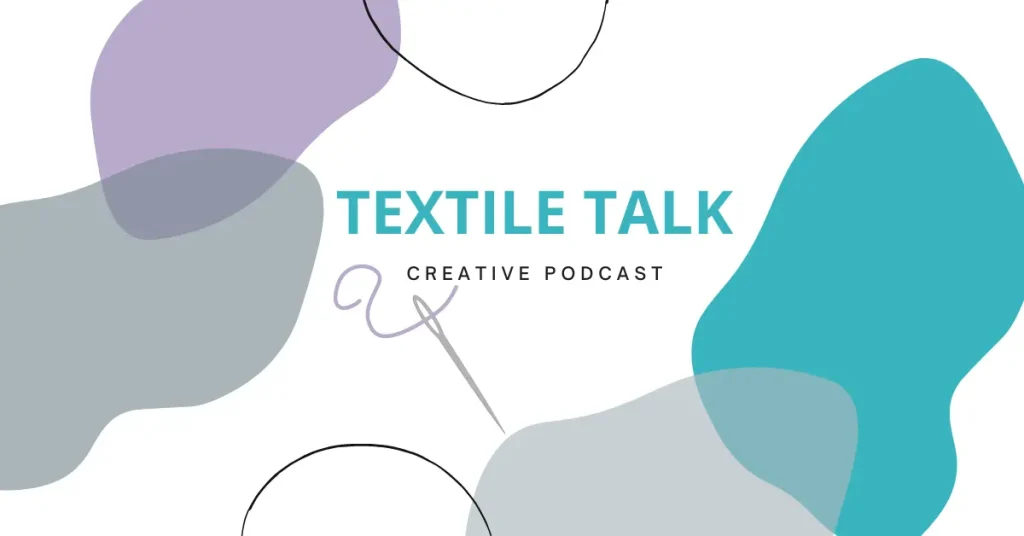



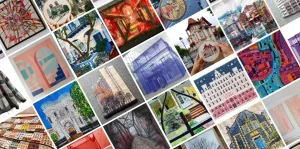




2 Comments
This was a very interesting blog post to read. The inspiration behind Larysa’s work is fascinating and I enjoyed learning about the fabrics used to create the work.
Thankyou so much Louise. Your moths are so beautiful and so exactly catch “mothness”.
And the extra dimension you give them with the (exquisite) references to the natural world they inhabit.
I also admire your tenacity in taming velvet. They appear to be mostly cotton velvets, and I wonder whether you ever take on silk velvet.
Thanking you again, Rachel Celia